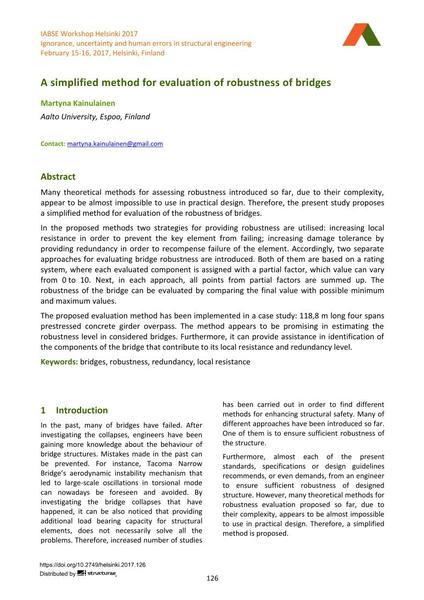| Medium: |
conference paper |
| Language(s): |
English
|
| Conference: |
IABSE Workshop: Ignorance, Uncertainty, and Human Errors in Structural Engineering, Helsinki, Finland, 15-16 February 2017 |
| Published in: |
IABSE Workshop Helsinki 2017 |
|
Page(s):
|
126-133
|
Total no. of pages: |
8 |
|
|
Page(s):
|
126-133
|
| Total no. of pages: |
8 |
| DOI: |
10.2749/helsinki.2017.126 |
|
Abstract:
|
Many theoretical methods for assessing robustness introduced so far, due to their complexity, appear to be almost impossible to use in practical design. Therefore, the present study proposes a simplified method for evaluation of the robustness of bridges. In the proposed methods two strategies for providing robustness are utilised: increasing local resistance in order to prevent the key element from failing; increasing damage tolerance by providing redundancy in order to recompense failure of the element. Accordingly, two separate approaches for evaluating bridge robustness are introduced. Both of them are based on a rating system, where each evaluated component is assigned with a partial factor, which value can vary from 0 to 10. Next, in each approach, all points from partial factors are summed up. The robustness of the bridge can be evaluated by comparing the final value with possible minimum and maximum values. The proposed evaluation method has been implemented in a case study: 118,8 m long four spans prestressed concrete girder overpass. The method appears to be promising in estimating the robustness level in considered bridges. Furthermore, it can provide assistance in identification of the components of the bridge that contribute to its local resistance and redundancy level.
|
|
Keywords:
|
bridges robustness redundancy local resistance
|

